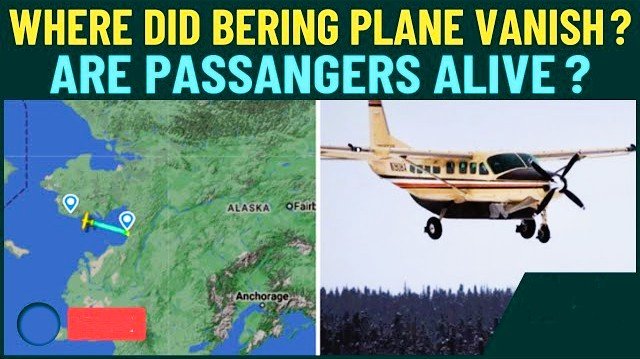Missing Flight 455: Cessna Grand Caravan Disappears Over Alaska
Routine flight vanishes from radar amid harsh winter conditions
On February 6, 2025, a Cessna Grand Caravan operating as Flight 455 vanished without a trace in the remote region between Ana Clay and Gnome, Alaska. The aircraft, carrying nine passengers and one pilot, disappeared during a routine 43‐minute scheduled service, with no distress call or indication of trouble from the cockpit.
According to the last communication, the pilot was checking in with air traffic control while the plane was in a holding pattern over Norton Sound. Following this standard check-in, the flight abruptly stopped transmitting and was no longer visible on real‐time tracking systems, such as those provided by popular flight tracking websites.
The disappearance prompted an immediate and massive search and rescue operation. Local volunteer fire departments, ground search teams, the US Coast Guard, and even support from the Air National Guard and the Air Force were mobilized. However, the severe Alaskan winter—with its brutal icing conditions, low visibility, and snow squalls—has made the search particularly challenging.
Early investigations by the National Transportation Safety Board (NTSB) suggest several possible explanations. Among the leading theories is a sudden catastrophic mechanical failure that left the pilot with no time to react, as well as potential weather-related issues such as severe icing or a microburst. Although human error is also being considered, the expertise and extensive training of pilots in such harsh conditions have so far offered limited clues.
The incident has raised wider concerns beyond the technical and meteorological factors. For remote Alaskan communities that rely on these flights for essential services—ranging from grocery deliveries and mail to critical medical evacuations—the loss of a flight is not only a logistical setback but also a severe blow to community connectivity and morale.
Furthermore, the case has ignited debates over current aviation tracking technologies. As search teams rely on traditional methods and radar, many are calling for advanced real‐time tracking systems that can operate reliably in extreme weather and over remote terrain.
Social media has also played a dual role in the unfolding story. While platforms have helped spread awareness and mobilize support for the search effort, they have equally fueled speculation and misinformation, further complicating the flow of verified information.
With the NTSB now deep into its investigation, many questions remain unanswered. The inquiry will examine every facet—from the aircraft’s de-icing systems and emergency locator transmitters to the pilot’s training records—to determine if changes in aviation safety protocols are needed for operations in unforgiving environments like Alaska.
The search for Flight 455 continues, and the affected communities remain in a state of anxious anticipation. As authorities work to uncover the truth behind this tragic disappearance, the incident serves as a stark reminder of both the limits of technology and the formidable power of nature.

